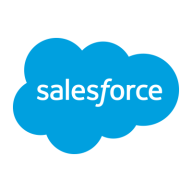

Tableau Enterprise and Oracle OBIEE both serve as strong competitors in the business intelligence tool category. Tableau appears to have the upper hand with its superior graphical representation and ease in creating interactive dashboards, while Oracle OBIEE is preferred for enterprises needing robust data governance and tight integration.
Features: Tableau offers extensive graphical representation features, seamless data source integration, and an intuitive user-driven report creation process. Oracle OBIEE excels in structured data support, semantic models, and strong enterprise governance capabilities.
Room for Improvement: Tableau needs improvement in handling large datasets and often brings up pricing concerns. Its ETL capabilities and integration with structured data could also be enhanced. Oracle OBIEE could improve in user-friendliness and visual appeal, and the ease of creating interactive dashboards and reports for non-technical users.
Ease of Deployment and Customer Service: Tableau provides multiple deployment options across cloud environments but has mixed reviews on customer support, with response times noted as needing improvement. It benefits from an active user community. Oracle OBIEE usually relies on on-premises deployment and, while extensive, has a steep learning curve, requiring technical expertise despite having structured support.
Pricing and ROI: Tableau is seen as expensive, particularly for smaller firms, but claims strong ROI due to fast insights and efficient data discovery. Licensing models are flexible depending on user needs. Oracle OBIEE is also known for a complex and costly pricing model yet offers significant value for large enterprises through robust data integration and governance, though at a higher expense.
This saves a significant amount of time, particularly for reports that would have needed around fifty people.
The ROI of using Tableau extends to its seamless integration across various platforms, as it's from Salesforce and thus not limited to any specific cloud provider.
Tableau is saving me time, money, and resources, which I would rate as ten.
The tendency to route users to sales personnel with limited technical expertise detracts from the support experience.
They provide quick email and phone responses and have Thai-speaking personnel.
There should be consistent standards for all users.
The technical support for Tableau is quite good.
While Oracle OBIEE is scalable, it is more of a niche product designed to work specifically with Oracle systems.
Tableau is easy to use across various dimensions, whether on-premises or on the cloud.
The solution is fully scalable and performs well even with large datasets, provided there is proper supporting hardware.
Tableau is easy to scale.
The application hangs after continuous use due to the buildup of cache.
I rate the stability a five or six because Tableau updates very often with new versions or patches.
Oracle OBIEE has a steep learning curve compared to tools like SQL Server or Power BI.
We cannot send the entire Excel file reports via email within Tableau.
The product owner should enhance its benefits or clarify its role.
It sometimes requires extensive investigation to determine why the data does not appear correctly.
Oracle OBIEE is quite expensive, especially when compared to Microsoft's solutions.
Power BI as a much cheaper alternative.
A license for 150 users costs around $17,000 USD per year.
Looker is known to be quite expensive.
A valuable feature of Oracle OBIEE is its ability to automate some tasks, such as invoice analysis, saving a significant amount of clerical work.
A significant feature for me is the real-time connection to data sources because it effectively manages large data sets.
Tableau serves as a stable dashboarding tool for higher management, aiding in quick decision-making.
Building hyper extracts and visualization capabilities make Tableau a robust tool for data analysis.
| Product | Market Share (%) |
|---|---|
| Tableau Enterprise | 9.2% |
| Oracle OBIEE | 2.0% |
| Other | 88.8% |


| Company Size | Count |
|---|---|
| Small Business | 40 |
| Midsize Enterprise | 34 |
| Large Enterprise | 102 |
| Company Size | Count |
|---|---|
| Small Business | 117 |
| Midsize Enterprise | 66 |
| Large Enterprise | 183 |
Oracle OBIEE (Oracle Business Information Enterprise Edition) is a business intelligence (BI) tool developed by Oracle. OBIEE will gather, store and analyze an organization's network data and compile the information to create reports, dashboard graphs, and performance analysis. OBIEE’s unique platform allows clients to discover new awareness and improve the speed of completing important business decisions by providing robust visual tools and intuitive realization coupled with the latest unmatched enterprise analytics available. OBIEE helps IT enterprise organizations to experience an intelligent view of all enterprise data from across all sources and empowers trusted users with increased levels of reliable, dependable access, interaction, and the ability to utilize the data to increase the overall effectiveness and productivity of the organization.
OBIEE provides unique immediate mobile access, intuitive dashboards, robust reporting, real-time alerts, metadata search, procedure management, direct access to Big Data resources, enlightened in-memory computing, and seamless systems management processes. These features seamlessly combine to make Oracle OBIEE a complete, top-of-the-line broad solution that is cost-effective, minimizes TCO, and provides a competitive, quick ROI for the entire organization.
Oracle OBIEE Top Features
Reviews from Real Users
Sandeep V., Process System Engineer at a comms service provider, tells us, “This solution is very easy for people who are building ad-hoc things. It's an enterprise solution so it can be deployed for a lot of users. There are some great new features that come with the 12c like data visualization, desktop BI Publisher, automation, and interactive dashboards. The product has good features. “
A user who is a CEO at a consultancy relates, “The most valuable feature is the visualization. The data warehousing, data storage, and data wrangling are all features that are in there, and it's one of the better products out there. A good thing is that for large datasets, it's very stable, especially when you have an Oracle database.”
A user who is a Principal Business Intelligence Architect at a computer software company suggests, "It is very biased towards Oracle infrastructure. One of the major red flags we have at the moment against Oracle is that it doesn't support deployment on other cloud providers. We're quite heavily vested in AWS as our infrastructure, and Oracle is yet to formally support deploying on those virtual infrastructure instances. That's quite disappointing, and it also cuts them out of over 70% of the market."
Tableau Enterprise offers powerful features for creating interactive visualizations, dashboards, and maps, including drag-and-drop functionality and easy integration with multiple data sources, promoting real-time collaboration and self-service analysis.
Tableau Enterprise stands out with its ability to create user-friendly, interactive visualizations, making it pivotal for business intelligence applications. Users benefit from its seamless connectivity and advanced analytical functions, facilitating data blending and storytelling. Despite a complex learning curve and high licensing costs, its features like geospatial analysis and efficient content distribution drive its indispensable value for data-driven insights. Enhancements in predictive analytics and support integration with machine learning tools further its capabilities across industries.
What are the most valuable features?Tableau Enterprise is widely used for business intelligence, supporting industries like healthcare, telecommunications, and finance. Organizations utilize it to analyze performance indicators, operational insights, and financial analytics, enhancing decision-making through interactive reports and real-time data integration.
We monitor all BI (Business Intelligence) Tools reviews to prevent fraudulent reviews and keep review quality high. We do not post reviews by company employees or direct competitors. We validate each review for authenticity via cross-reference with LinkedIn, and personal follow-up with the reviewer when necessary.